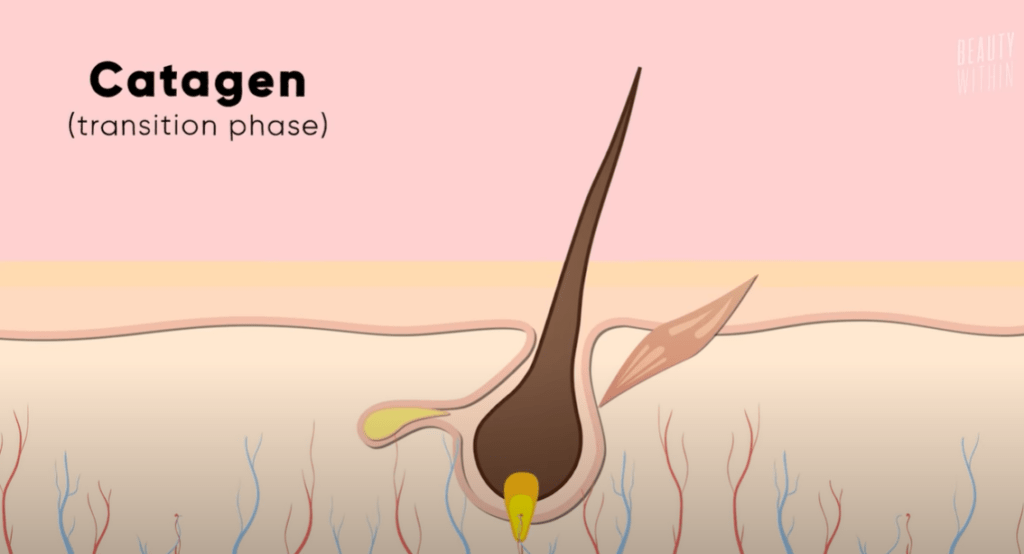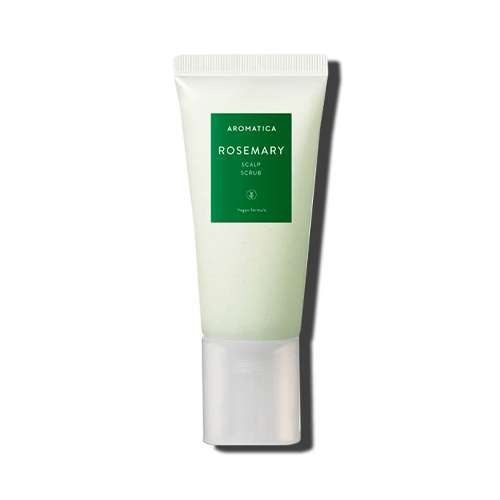
Nothing makes you panic like finding a gob of hair near the drain after a shower. Even though you know losing 100 to 150 strands a day is normal, it seems excessive. It doesn’t help that stressful life events and catching COVID have caused hair loss that can last six months. However, there is a difference between hair loss and hair shedding. Here is how to tell if you are losing too much hair.
The stages of hair growth
It’s important to understand the stages of hair growth to know if you are experiencing hair loss. The hair growth cycle has four phases: anagen, catagen, and telogen.
Anagen

The anagen phase is the growth phase, lasting approximately three to seven years. During this time, hair grows about half an inch each month. If you have difficulty growing your hair, it could be due to a short anagen phase.
Catagen

The catagen phase is a transitional phase signaling the end of the growth phase. Your hair will disconnect from the root but remain in the follicle. This phase lasts two to three weeks, and 3% of your hair is in this stage at any given time. This explains why you don’t lose all your hair at the same time.
Telogen

The telogen phase is the resting phase. At this point, your hair is no longer growing and is in the process of shedding itself. This phase accounts for 6%-8% of the hair on your head.
If you ever wonder how it’s possible that you haven’t gone bald even though you shed so much, it’s because most of your hair is in the anagen phase. I don’t know about you, but I found that very comforting!
What is considered hair loss vs. hair shedding?
While hair loss and hair shedding manifest in the shedding of hair, there are two big warning signs. Hair loss, medically known as anagen effluvium, is when you abruptly lose about 70% of hair in the anagen phase due to a physical or emotional shock. Hair loss also consists of hair falling out but not regrowing.
Hair shedding is part of the hair growth cycle, though it is possible to have excessive hair shedding, known as telogen effluvium. This type of hair shedding is temporary, and your body will work to adjust itself as long as your stressors stop. Your hair should regain its fullness in six to nine months. However, you should schedule a visit with your doctor if you are still experiencing excessive hair shedding.
What causes hair loss?
Several factors cause hair loss, including:
- Hereditary hair loss (aging)
- Excessive stress
- Hormonal changes
- Poor diet
- drugs or treatment such as chemotherapy
- Dramatic weight loss
- Giving birth
- Surgery
- Medical conditions such as lupus
- Tight hairstyles
How do I take care of my hair?
It’s impossible to stop your hair from naturally shedding, loss due to aging or medical treatment. However, you can do several things to keep from clogging your drain.
- Work on managing stress
- Eat a well-balanced diet
- Drink water
- Exercise regularly
- Avoid tight hairstyles
Speaking of hairstyles, the way you brush and wash your hair can also impact hair loss and shedding. Here are some tips to keep in mind.
- Avoid brushing hair when wet
- Brush before taking a shower
- Brush hair in sections starting from the tips and work your way up.
- Hold sections of hair while brushing instead of tugging from the scalp.
- Shampoo your scalp and condition your ends
- Rinse with cold water
Finally, make sure you are investing in the right hair care products. Look for products that treat your scalp as well as your hair.
For more information & tips on how to prevent hairloss, check out our video!
Want to see more discount codes? Check out the link: https://shopmyshelf.us/collections/51665
Sign up for our free online newsletter: https://bwth.in/newsletter
Shop all of our curated faves at: https://bwth.in/shop
Subscribe to our YouTube Channel for more information and product recommendations: https://bwth.in/subscribe











